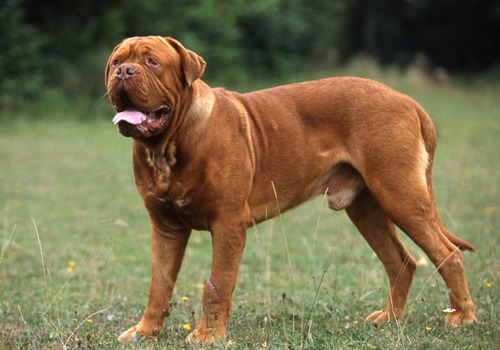The Dogue’s short coat is easy to groom. Brush him once a week with a rubber curry brush to remove dead hairs. But there’s more to grooming than coat care. The Dogue has wrinkles and they need special care so they don’t become infected. Wipe them out using a damp cloth or a baby wipe, then dry the folds thoroughly to prevent skin infections.
Carry a hand towel for wiping his wrinkled face after every meal or drink of water. When he shakes that big head, he slings gobs of drool everywhere. He also sheds heavily, so you’ll be spending plenty of time sweeping and vacuuming.
The rest is basic care. Check the ears weekly and clean them if necessary, brush the teeth as often as possible, and trim the nails regularly, usually every few weeks.
This being a larger dog, a long walk will be required to ensure it gets its daily exercise, but the importance of exercise is also an emphasis on its psychological benefits.
This is especially important to this breed so that it doesn’t store any pent up energy. Since this is a dog that sometimes forgets its own strength and weight, making sure it is good tired out will be essential to keeping it healthy and happy around the house.
An exceptionally large and heavy dog, this breed requires a similarly large diet, with normal monitoring of weight fluctuations like any other dog. This dog, however, does not require an exceptionally large diet because it’s not a very vigorous exerciser.
Bloat, or gastric dilatation and volvulus (GDV), is a serious concern in the Dogue de Bordeaux. Owners should educate themselves to recognize the signs that bloat could be happening, and know what actions to take if so.
Heart disease, cancer, orthopedic issues (such as hips and elbows), and epilepsy are also issues of concern in the breed.Responsible breederswill screen their stock for conditions the breed can be prone to.
Like all large dogs, training with the Dogue de Bordeaux should be handled with care. You will undoubtedly notice the fierce guardian instincts in this dog, and you’ll feel quite safe in its presence, but care should be taken so that the dog does not become suspicious of all strangers and all other dogs.
Calm leadership that places clear boundaries on the Dogue de Bordeaux will be important, as will ensuring a pecking order that includes the dog in the family, but makes sure the dog understands its place below every human.











